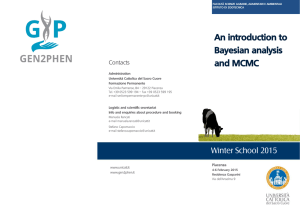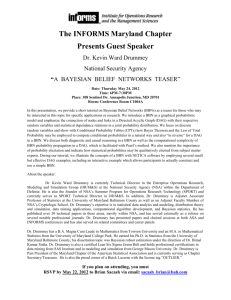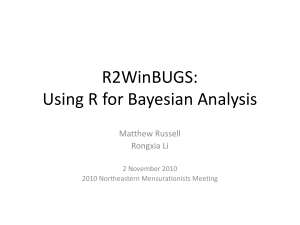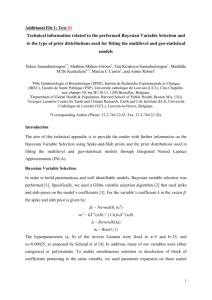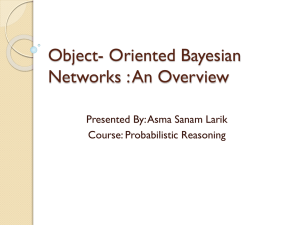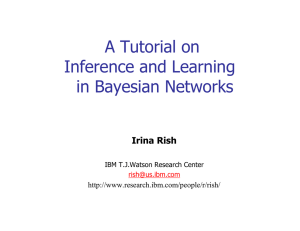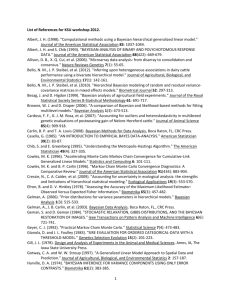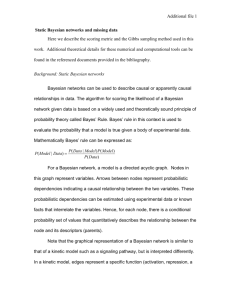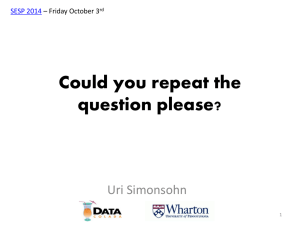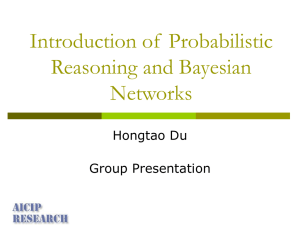Bayesian Network and Influence Diagram
advertisement
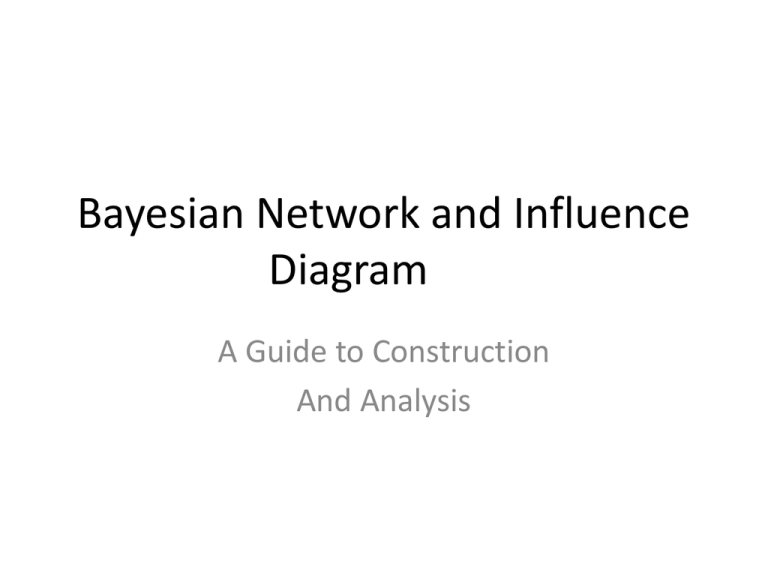
Bayesian Network and Influence Diagram A Guide to Construction And Analysis Chapter 1 Introduction • This chapter provides brief accounts on the context of Probabilistic Networks, what they are and when to use them • The main topic covered are – Expert Systems – Rule-Based Systems – Bayesian Networks Expert Systems • A system that is able to perform tasks that are intellectually demanding often said to exhibit an Expert System if the system’s problem solving ability is restricted to particular area • The techniques that enable us to construct devices and services that are able to – Perform reasoning and decision making under uncertainty – Acquire knowledge from data/experience – Solve problems efficiently and respond to new situation Representation of Uncertainty • Randomness and uncertain judgment is inherent in most real world decision problems • We need a method to automate reasoning and decision making under uncertain statements and conditions and method to combining the measures such that reasoning and decision making under uncertainty can be automated • Probability theory is the prevailing method for dealing with uncertainty and is the focus of this book • Alternative method to probability theory are Belief Theory and Fuzzy Methods Normative Expert Systems • Earlier the expert system is design to mimic human behavior • Today a model of the problem domain is created instead of model of the expert • Normative expert systems uses classical probability calculus and decision theory as their basis of reasoning and decision making under uncertainty Rule-Based Systems • One of the earliest methods of knowledge representation and manipulation was logical rules of the form • R1: if s1 then s2 – S2 can be concluded with certainty when s1 is observed • R2: if s2 then s3 – S3 can be concluded through forward chaining involving R1 and R2 once s1 is known • These rules are asymmetric Causality • Occurrence of some event c is known to cause the effect e, relationship between c & e is deterministic • If c then e, rather then e then c • We can conclude that rules like R1 and R2 express causal relationship • Rule based system represent the problem domain only up to some precision • Smoking → bronchitis → dyspnoea Causality Contd. • R3: if smoking then bronchitis • R4: if bronchitis then dyspnoea • R4’: if dyspnoea then bronchitis Uncertainty in Rule-Based Systems • The vast majority of cause-effect mechanism of interest in our attempts to model parts of the world in the expert systems are uncertain • A method of rule-based system with uncertainty was developed in the 1970s • Certainty Factor CF [-1,+1] indicates the strength of the conclusion of the rule whenever it’s condition is satisfied Explaining Away C1 E1 C2 E2 C1 can cause event E1 & E2, and C2 can cause event E2 Bayesian Networks • Due to serious limitations in the rule-based systems with certainty factor as a method for knowledge representation, researchers turned their attention towards probabilistic interpretation of certainty factor, leading to Bayesian Network • Bayesian can be defined as acyclic directed graph DAG which defines a factorization of a joint probability distribution over the variables that are represented by nodes of the DAG, factorization is given by directed links of the DAG Bayesian Networks Contd. • A joint probability distribution over the set of variables can be represented as • P(U) = ∏ P(Ai | pa(Ai)), Inference in Bayesian Networks • Contrary to rule-base systems, inference in Bayesian network is consistent • Efficiency of inference is highly dependent on structure of DAG • Posterior Probability distribution P(X|Y=y) – P(X|Y=y) = P(Y=y|X)P(X) P(Y=y) Construction of Bayesian Networks • Bayesian networks can be describe in terms of a qualitative component consisting of a DAG, and a quantitative component, consisting of joint probability distribution • The construction of Bayesian networks runs in two phases – Identification of relevant variables and causal relation among them – The resulting DAG specifies a set of dependent and independent assumptions that will be enforced on joint probability distribution specifying a set of conditional probability distributions An Example Spark-Plugs Fuel Fuel-gauge Start?


